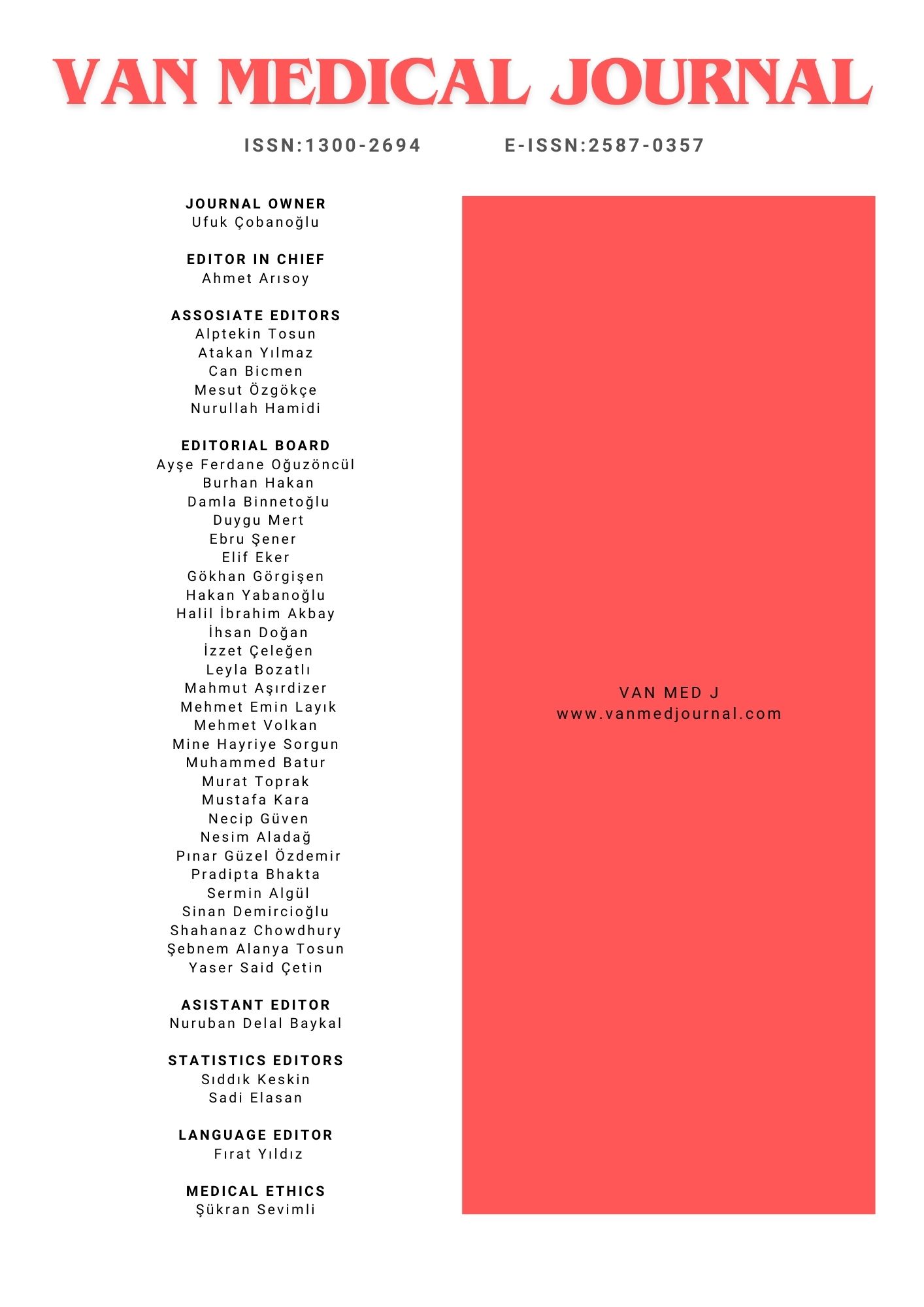Post Tonsillectomy Bleeding; Possible Risk Factors
Zülküf Kaya, Vahit MutluDepartment of Otorhinolaryngology, Faculty of Medicine Atatürk University, Erzurum, TurkeyINTRODUCTION: Post tonsillectomy bleeding (PTB) is still one of the most common and life-threatening urgent complications. Knowing the factors that cause bleeding can be helpful in preventing the bleeding. With this study, we aimed to determine the risk factors for the occurrence of this complication by determining the incidence of bleeding after tonsillectomy in our clinic.
METHODS: Medical records of patients who underwent tonsillectomy in our clinic between January 2013 and December 2017 and were followed up and treated due to PTB were retrospectively reviewed. All patients were evaluated for age, sex, operative method applied, severity of bleeding, presence of infection in the tonsil bed, and relationship of the bleeding to the seasons.
RESULTS: A total of 667 patients were included in the study. The mean age of the patients was 8.5 ± 12.5; 498(73.3%) were children and 178(26.7%) were adult. The incidence of PTB was higher in adults(21.3%) than in children(4.3%)(p <0.05). It was observed that 35(59.9%) of the cases with PTB were operated with cold and 24(40.1%) with hot dissection method. The incidence of bleeding of cold dissection was 10.9% while the rate of hot dissection was 6.9%(p <0.05). 25.4% of cases with PTB showed infection in the tonsil bed. When evaluated according to the seasons, it was seen that most of the bleedings(76%) occurred during the cold months(p <0.05).
DISCUSSION AND CONCLUSION: The hot dissection method should be chosen as the dissection method of tonsillectomy, the infection that can develop after surgery should be prevented, and the possibility of bleeding in advanced ages and during the cold seasons should be considered.
Tonsillektomi Sonrası Kanama; Olası Risk Faktörleri
Zülküf Kaya, Vahit MutluAtatürk Üniversitesi Tıp Fakültesi Kulak Burun Boğaz Hastalıkları ve Baş boyun Cerrahisi Anabilim Dalı, Erzurum,TürkiyeGİRİŞ ve AMAÇ: Tonsillektomi sonrası kanama (TSK) hâlâ sık rastlanan ve yaşamı tehdit eden acil bir komplikasyondur. Kanamaya neden olan faktörlerin bilinmesi kanamayı engellemede yararlı olabilir. Bu çalışma ile kliniğimizde yapılan tonsillektomi sonrası meydana gelen kanama insidansını tespit ederek, bu komplikasyonun oluşumunda etken olan risk faktörlerinin belirlenmesi amaçlandı.
YÖNTEM ve GEREÇLER: Ocak 2013-Aralık 2017 tarihleri arasında kliniğimizde tonsillektomi yapılıp TSK nedeniyle takip ve tedavi edilen hastaların tıbbi kayıtları geriye dönük incelendi. Hastaların tümü yaş, cinsiyet, uygulanan ameliyat yöntemi, kanamanın ciddiyeti, tonsil yatağında enfeksiyon varlığı ve mevsimlerle olan ilişkisi açısından değerlendirildi.
BULGULAR: Toplam 667 hasta çalışmaya dahil edildi. Hastaların yaş ortalaması 8,5±12,5 olup bunların 498(%73,3)’i çocuk, 178(%26,7)’i yetişkin idi. TSK insidansı yetişkinlerde (%21,3), çocuklardan (%4,3) daha fazla görüldü (p<0,05). TSK’sı olan vakaların 35(%59,9)’inin soğuk, 24(%40,1)’ünün ise sıcak diseksiyon yöntemiyle ameliyat edildiği görüldü. Soğuk diseksiyonun kanama insidansı %10,9 iken sıcak diseksiyonun %6,9 bulundu (p<0,05). TSK’sı olan vakaların %25,4’inde tonsil yatağında enfeksiyonu belirlendi. Mevsimlere göre değerlerdirildiğinde ise kanamaların çoğunun (%76) soğuk aylarda meydana geldiği görüldü (p<0,05).
TARTIŞMA ve SONUÇ: Tonsillektomide diseksiyon yöntemi olarak sıcak diseksiyon yöntemi seçilmeli, ameliyat sonrası gelişebilecek enfeksiyon önlenmeli, ileri yaşta ve soğuk mevsimlerde kanamanın artma ihtimali göz önünde bulundurulmalıdır.
Corresponding Author: Zülküf Kaya, Türkiye
Manuscript Language: Turkish

